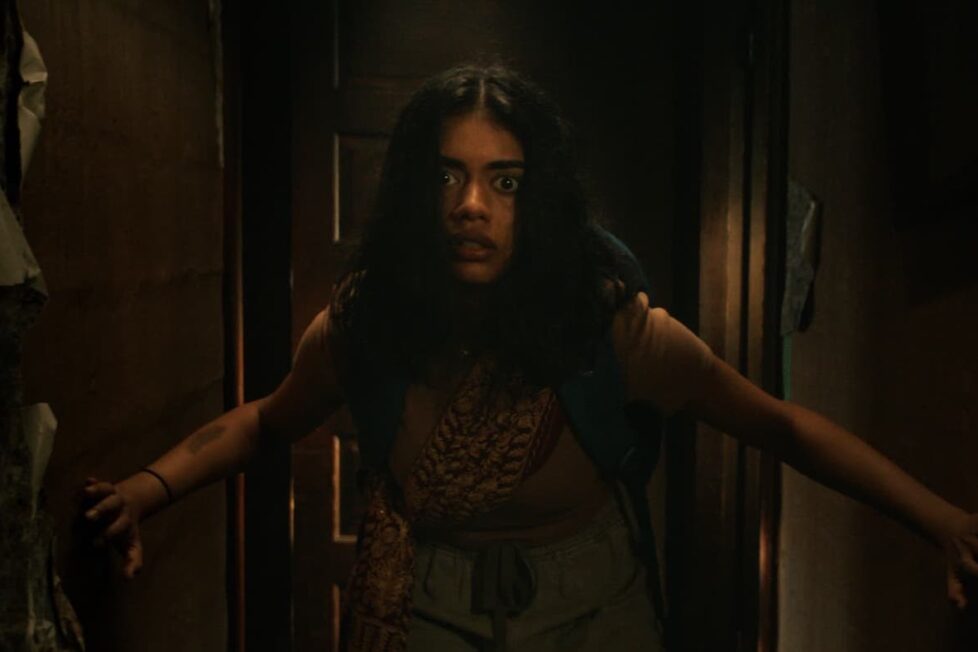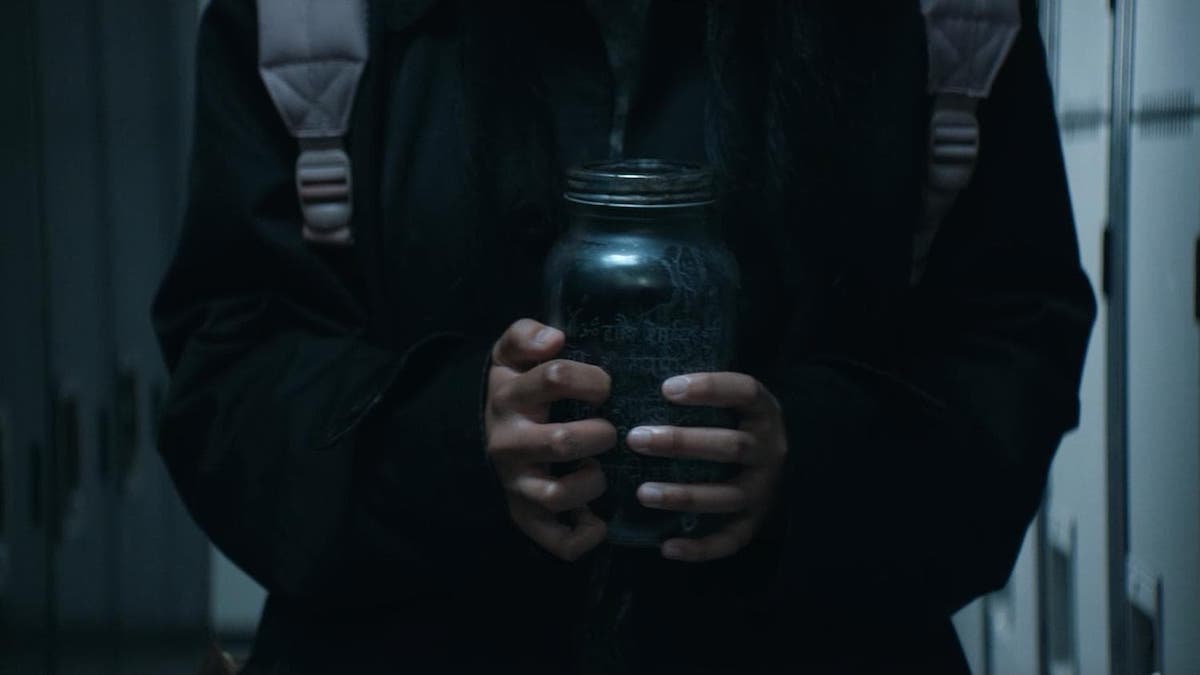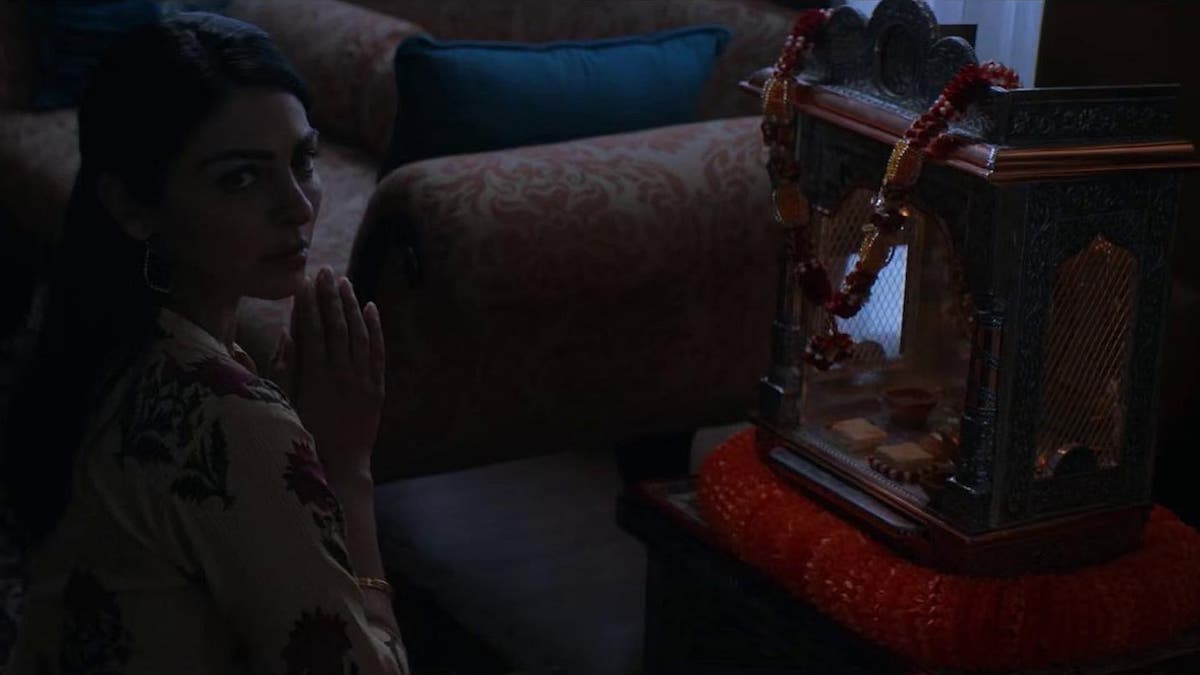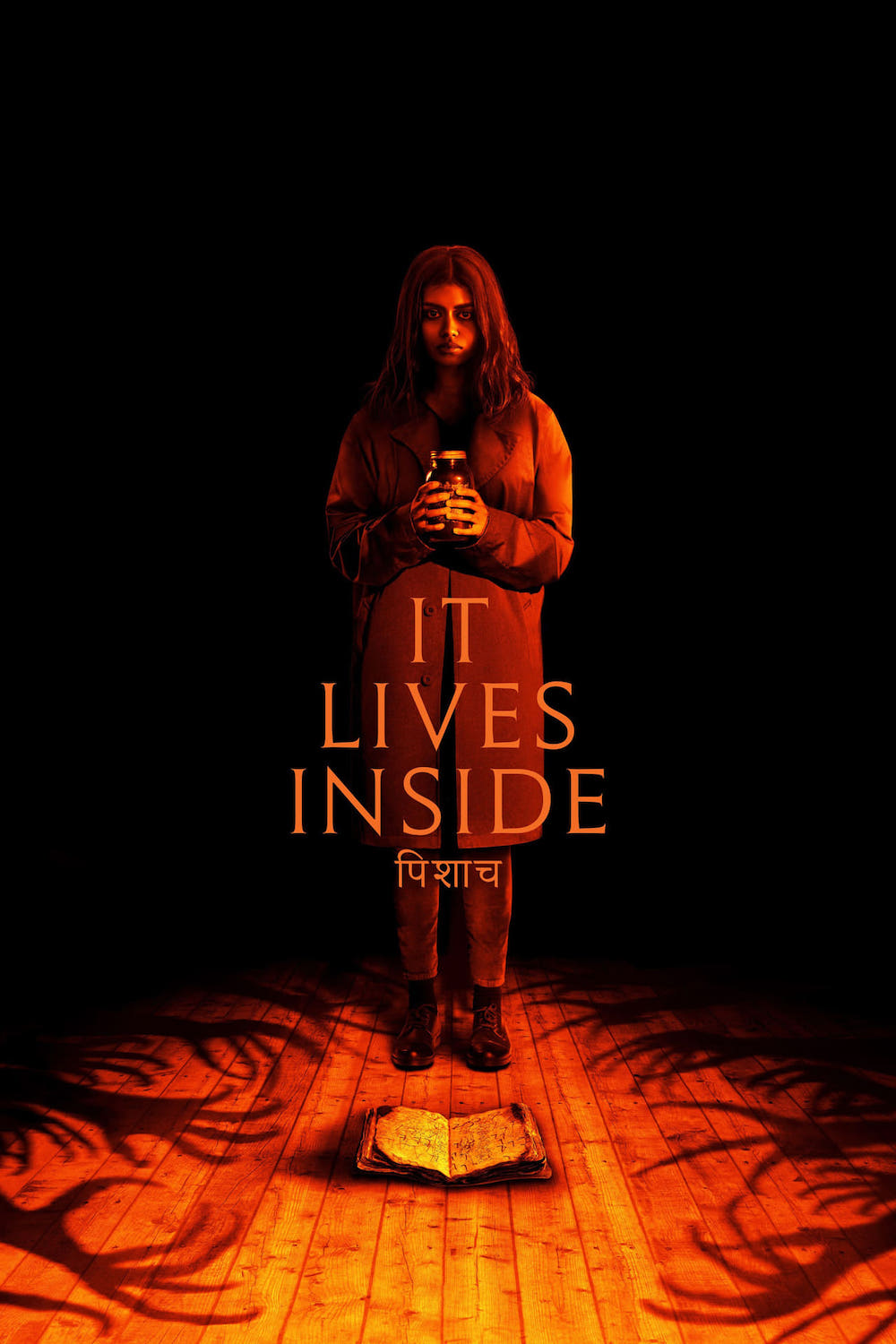IT LIVES INSIDE (2023)
An Indian-American teenager struggling with her cultural identity has a falling out with her former best friend and, in the process, unwittingly releases a demonic entity...

An Indian-American teenager struggling with her cultural identity has a falling out with her former best friend and, in the process, unwittingly releases a demonic entity...


Hollywood has always been dominated by horrors featuring ancient Christian demons and supernatural creatures. Although The Djinn (2021) and Attachment (2022) explored the rich world of Islamic demonology and Jewish mysticism, such stories are uncommon next to their Christian counterparts. Utilising elements of Hindu and Buddhist mythology, writer-director Bishal Dutta incorporates his own Southeast Asian heritage into the formula. His resulting feature-length debut, It Lives Inside, successfully combines a cautionary folk tale with a glimpse into the challenges of cultural assimilation.
In a world where conformity reigns supreme, Samidha (Megan Suri) is struggling to find her place amongst her peers. She’s more interested in catching the eye of Russ (Gage Marsh) than taking part in Hindi ceremonies with her mother, Poorna (Neeru Bajwa). Part of Samidha’s efforts to assimilate herself into her classmates is distancing her from her childhood friend, Tamira (Mohana Krishnan). This task becomes harder when her overly involved teacher (Betty Gabriel) asks her to help her former friend. Tamira is troubled and mutters to herself in Hindi while carrying a glass jar containing something mysterious. When Tamira approaches Samidha seeking help, the jar accidentally breaks and an evil entity escapes. And, once unleashed, it abducts Tamira and begins targeting the people around Samidha. So to prevent the demon from wreaking further havoc on the town, Samidha must confront not just the creature but the active dissonance within herself.
Following her breakout role in Netflix’s Never Have I Ever (2020), Megan Suri continues to demonstrate her versatility as an actress. It Lives Inside is anchored by her remarkably compelling performance as Samidha. While her overbearing mother (Neeru Bajwa) attempts to keep her tethered to her Indian culture, she convincingly portrays the struggle and frustration of embracing her heritage while tackling the horrors of being a teenage girl.
Emphasising her character’s tumultuous emotions, Suri conveys a wealth of information with only facial expressions, as her beautiful large eyes are profoundly expressive and communicate the character’s isolation and paranoia. Whereas her timid demeanour communicates Samidha’s adolescent and cultural conflict. Similarly, despite having less screen time than her counterpart, Mohana Krishnan (I Am Frankie) is also excellent as Tamira. Immediately establishing a sense of dread, the hatred and pain she harbours since being ostracised by her classmates is palpable in each scene.

Considering filmmaker Bishal Dutta has never ventured into horror before, he demonstrated a firm understanding of the genre. Although It Lives Inside is never outright frightening, the foreboding tone that permeates almost every scene drips with such a sombre tone. Drawing upon Hindu mythology to provide an evocative mix of It Follows (2014) and The Babadook (2014), Dutta continually misdirects his audience’s attention to allow our imagination to create horror for him. The ominous threat remains largely invisible during the 100-minute runtime, but its existence generates a vast amount of unease. As Samidha begins feeling the demonic creature’s presence, the audience is gradually tormented by unsettling glimpses of the ephemeral figure. Its shimmering eyes appear in darkened closets while malevolent shadows creep around the edges of the frame. Shadowy figures and harrowing sounds are hardly revelatory, but Dutta’s calculated compositions fill the most unassuming sequence with nauseating unease.
As the ancient demon lurks in the darkness, Samidha’s sanity balances on the precipice of the abyss Matthe Lynn’s (Under the Influence) cinematography conveys this affliction through an unexpected combination of visual tricks. The disorienting compositions and unconventional camera angles heighten the intensity of the story, while the deep oranges and crimson reds transform the warm suburban environments into a landscape of dread.
Nolan McNaughton’s (Joy Ride) sound design also complements the nightmarish visuals and enhances the unflinching outlook of the production. Samidha’s screams are raised to an almost assaultive level, while unsettling whispers emanate from nowhere and provide a sonic dissonance to the most unassuming moments. Instances of supposed normality become insufferably tense as Tamira methodically taps her glass containment. The combination intelligently hints towards an unseen menace lurking beneath the surroundings, heightening the simmering tensions developing between the characters.
It’s disappointing how quickly and definitively It Lives Inside collapses under a predictable procession of mostly ineffective horror tropes. There are passages where Dutta proves himself to be a competent horror filmmaker by crafting some fleeting moments of brilliance, like an exceptionally cruel sequence involving a swing set to rival the bedroom scene in Wes Craven’s A Nightmare on Elm Street (1984).

However, beyond these brief successes, Dutta relies too heavily on conventionality instead of attempting to break new ground and the narrative beats adhere to a playbook. Samidha’s unsettling hallucinations during the middle of the night borrow from Ringu (1998), while a chase sequence throughout a high school could easily be mistaken for something from Lights Out (2016). It bears all the hallmarks of recent horrors released by indie powerhouse A24 but never reaches the same operatic heights. Unfortunately, it’s a derivative story of supernatural possession and malevolent hauntings that audiences have seen countless times before.
Despite relying heavily on predictable horror tropes, the combination of Hindu supernaturalism and Indian mythology breathes new life into an otherwise hackneyed narrative. Serving as an allegory of assimilation and the dangers of cultural conformity, Dutta and Ashish Mehta’s (Hush Hush) screenplay examines the anxieties encountered by children of immigrants attempting to vacillate between remaining faithful to family traditions and finding acceptance. Samidha struggles with her identity and desperately wants to distance herself from her heritage. Her conservative mother represents Hindi traditions by speaking her native language and emphasising the importance of cultural ceremonies. Whereas Samidha desperately wants to gain acceptance from her predominantly Caucasian classmates by conforming to ideological western beauty standards: she shaves her arms before leaving for school and applies filters to photographs to lighten her skin tone. She’s accepted her Americanised identity and doesn’t want to be associated with her culture.
After the Dharmic demon inevitably escapes from Tamira’s containment, Samidha ultimately becomes the creature’s next victim. The Pishach is a “devourer of souls” and feeds off the “anger, hatred, and loneliness” of its victims until they’re broken. As she’s plagued by terrifying apparitions, Samidha learns she must embrace her culture in order to overcome the demon. Once desperate enough to confide in her mother, they perform a Puja and prey to the Hindu goddess Durga. Symbolising protection and motherhood, the religious ceremony reconnects Samidha with her cultural heritage. Although the subtext is hardly understated and the potential is not entirely exploited, the exploration of Hindu mythology adds an appreciable personality to the material. There’s something thrilling in the process of being presented with new totems and spiritual practices to dispel supernatural entities rather than ones attributed to Christian ideology. Similar to Keith Thomas’ The Vigil (2019) and Nikyatu Jusu’s Nanny (2022), Dutta introduces a global audience to a fresh perspective and type of fear that viewers may otherwise not be acquainted with if they’re not familiar with the Hindu religion.
Ultimately, Bishal Dutta should be commended for his effort to amplify underrepresented voices and communities. He directs his feature-length debut with confidence and provides a vibrant story from a perspective that’s historically been kept away from mainstream audiences. Drawing on ancient Indian mythology and Hindu supernaturalism to terrorise his audience, the filmmaker demonstrates an appreciated understanding of the power of the imagination. Everything from the production design, lighting, and sound design is well executed. However, It Lives Inside ultimately falls short of providing the terrifying experience it attempts to achieve because it relies heavily on tropes commonly found in the genre. Regardless, underneath the formulaic thrills is a profound exploration of cultural identity in a world where being different is the truest terror.
USA | 2023 | 99 MINUTES | 2:39:1 | COLOUR | ENGLISH • HINDI


director: Bishal Dutta.
writers: Bishal Dutta & Ashish Mehta.
starring: Megan Suri, Neeru Bajwa & Mohana Krishnan.
